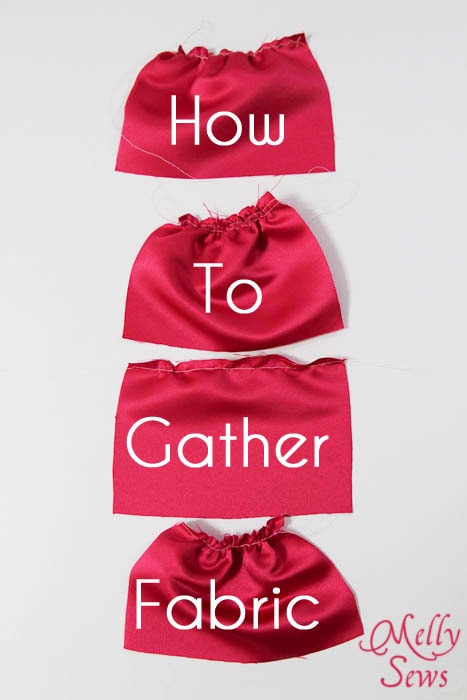
Welcome to Day 2 of the Amaryllis Dress Sewalong. Yesterday we discussed how to work with fancy party fabrics you might use for this dress, though it should be noted that the dress works just as well in easy to sew cottons. If you cut out your dress yesterday, you’ll note that the first step is to gather your front skirt to match the front bodice. So today we’re going to talk about how to gather fabric. The method given in the pattern is to sew two lines of basting stitches and then pull the top threads to gather.
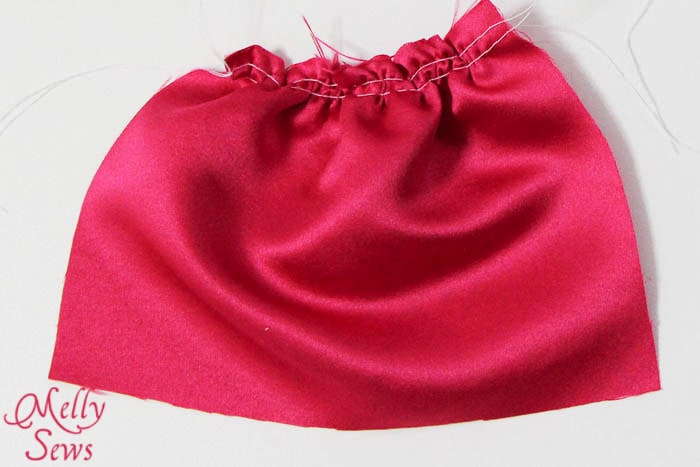
Another method that works well with stiffer fabric, particularly if you have to gather a long length, is to zig-zag stitch over a piece of heavy duty thread, then use the heavy duty thread to form the gathers. This method means you won’t deal with the broken thread that can happen with the basting thread method, but the gathers sometimes aren’t as even.
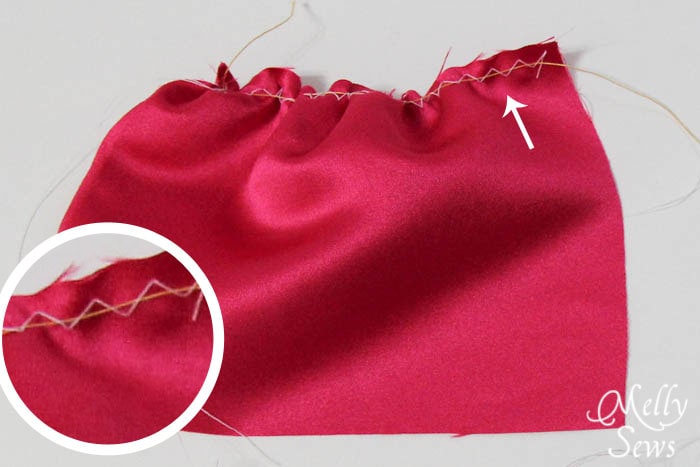
With a ruffle foot, shown below, you can also make gathers. Ruffle feet have several settings and a stitch finger that pushed the fabric into a small pleat every few stitches.
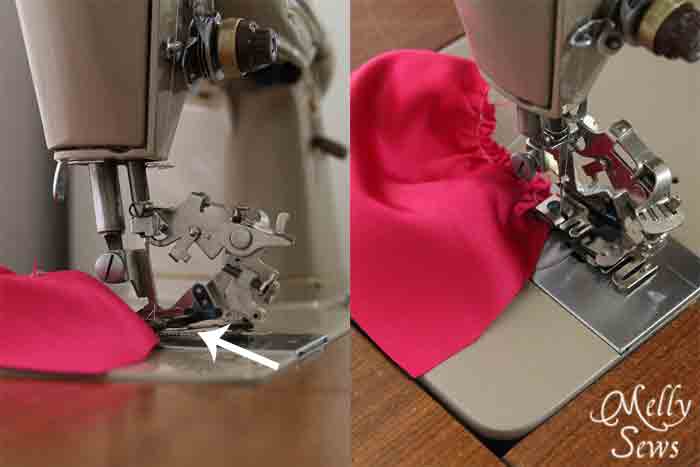
By playing with stitch length and the settings on the foot, your can get easy gathered fabric. BUT if you’re trying to gather something to match another piece, this either requires some sampling and math or the piece won’t end up the right length.
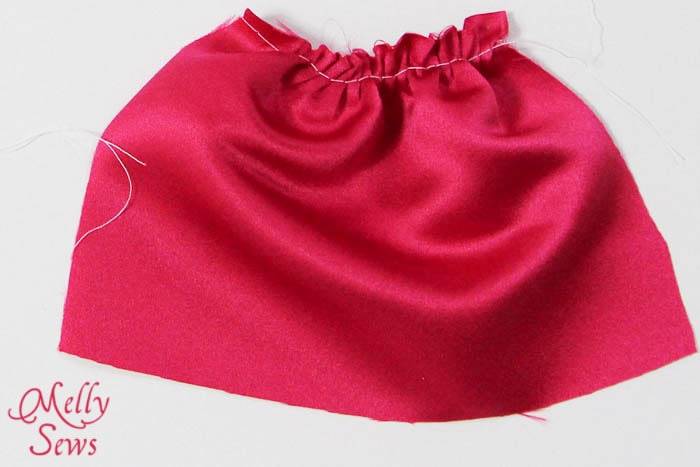
A final method of gathering that works on some machines is to crank the thread tension up as high as it will go, while leaving the bobbin tension alone. This difference in tension will create gathering with some machines, but it doesn’t work well on mine.
A comparison of different gathering methods.
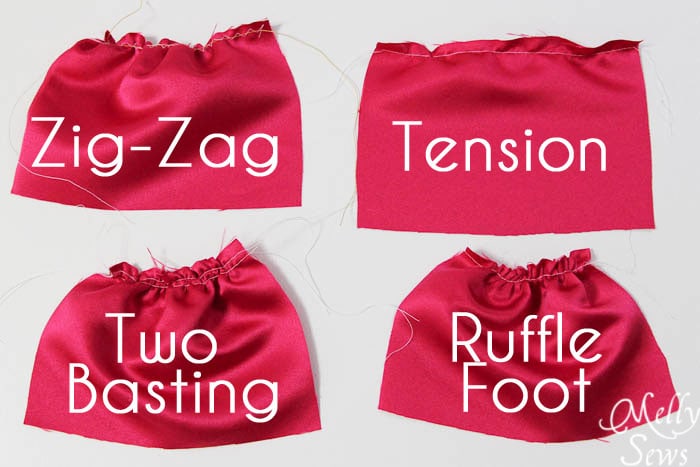
So, today you should be able to gather your front skirt to your bodice and proceed through the pattern until you get to the skirt back section. You may want to pause there, because tomorrow we’ll be talking about tulle.
Sewalong links:
Day 1 – dealing with formal fabrics
Day 2 – how to gather fabric
Day 3 – how to sew tulle
Day 4 – make your bow extra big
Day 5 – sew a rolled hem

Diane
Great ideas! I personally usually prefer the double row of stitches. Don’t have a gathering foot yet, but it’s on my list.
Stacia
I’m familiar with the basting method, but I’ve only ever sewn one line of thread. Would you mind explaining to me the benefit of sewing two lines?
Melissa Mora
Two lines will distribute the gathers more evenly, and they’re also useful over longer lengths when one thread alone might break; since they’re each taking part of the tension, they’re both less likely to break, and if one does you have a second.